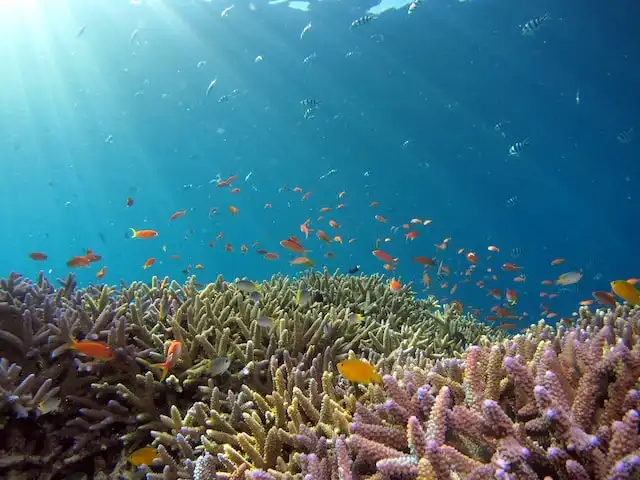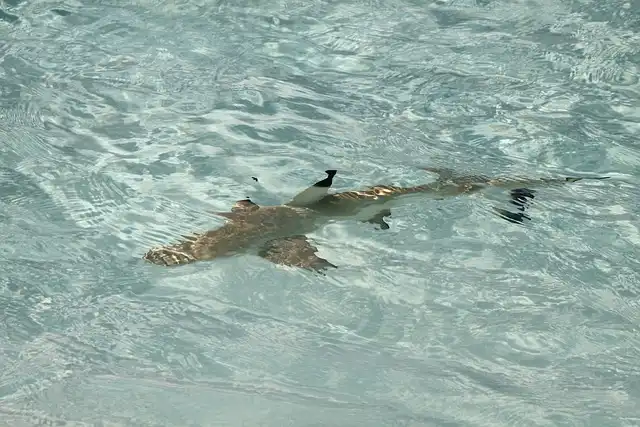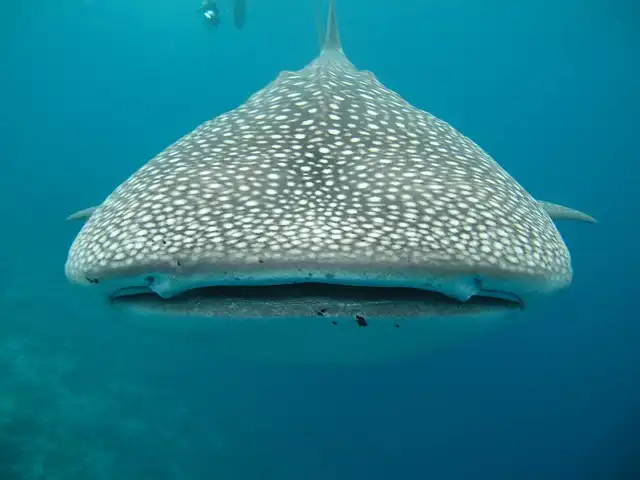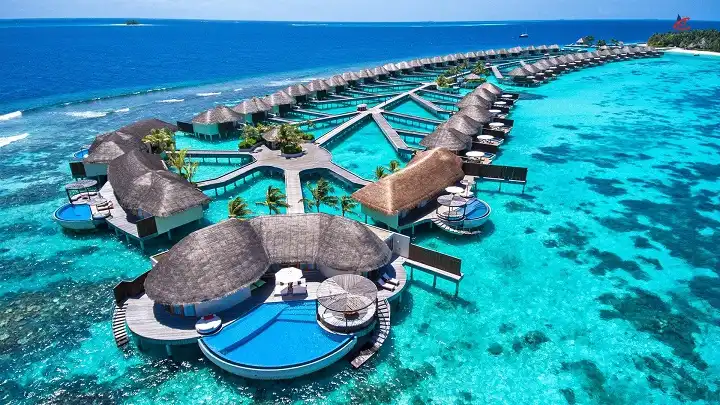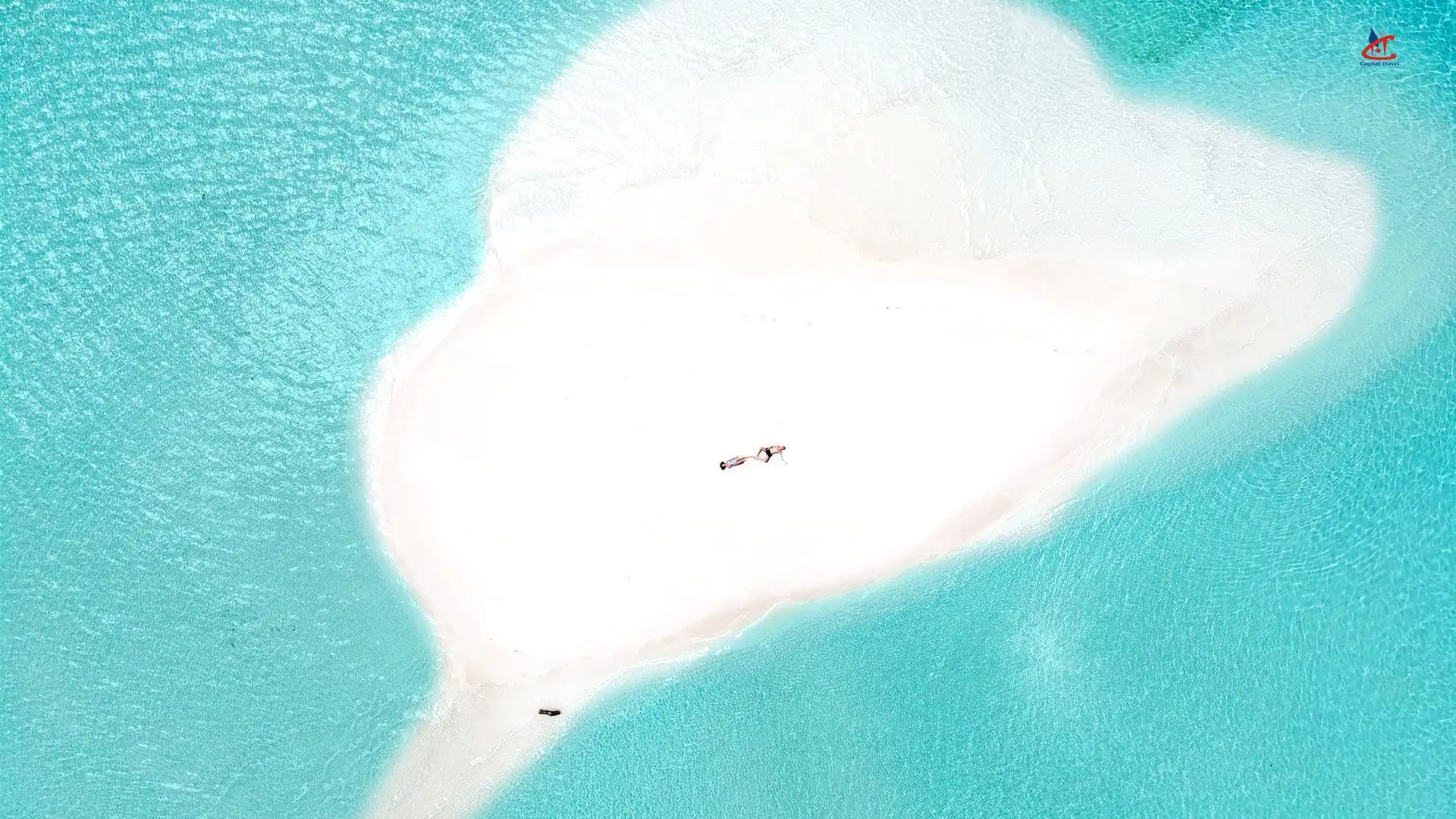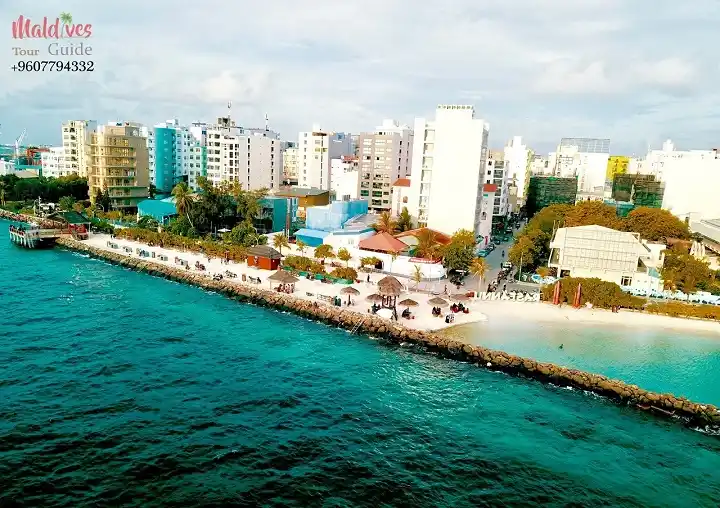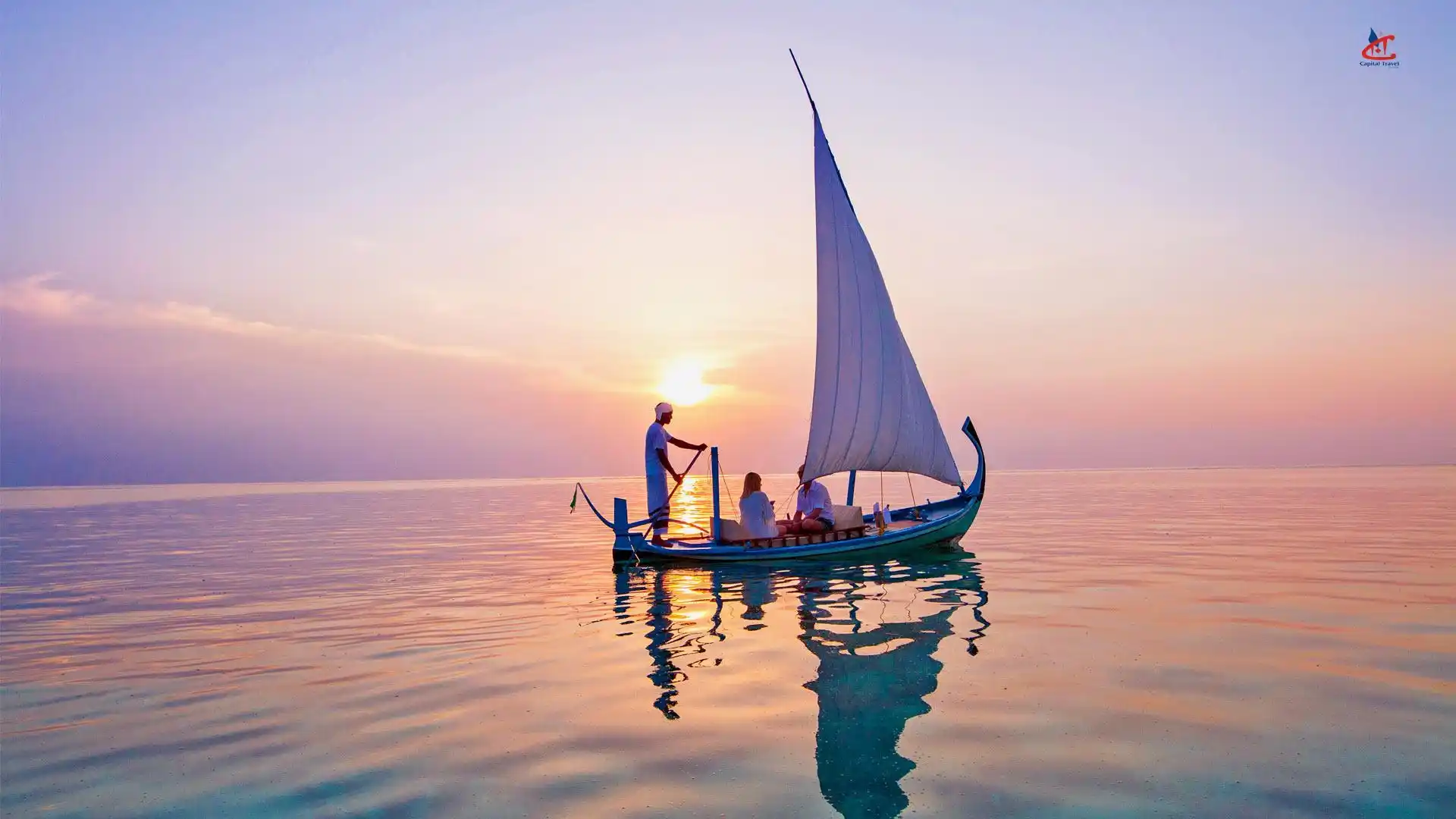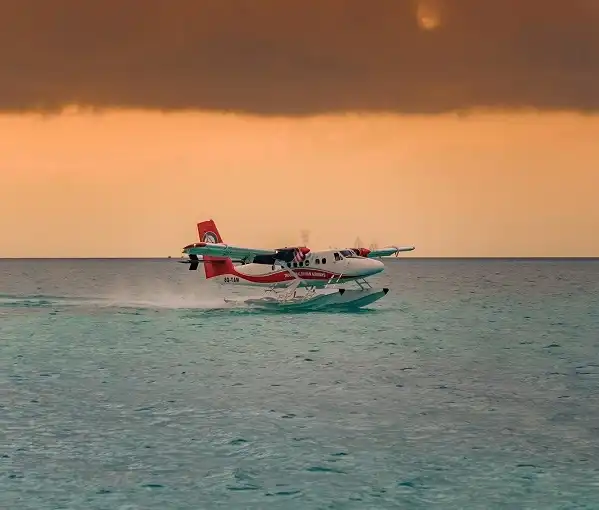
The Maldives offers some of the most breathtaking natural scenery on the planet
The Maldives is synonymous with paradise on Earth, a destination where nature's artistry is on full display. This archipelago of 1,192 coral islands scattered across the Indian Ocean presents a mesmerizing tapestry of azure waters, pristine beaches, vibrant coral reefs, and luxurious resorts that seem to float on the ocean. From bioluminescent beaches that glow at night to underwater wonders teeming with marine life, the Maldives offers a collection of breathtaking locations that seem almost too perfect to be real. This guide explores the 15 most beautiful places in the Maldives, showcasing the diverse natural and man-made wonders that make this island nation one of the world's most coveted destinations.
Video: Explore the most stunning locations across the Maldives archipelago
The extraordinary beauty of the Maldives stems from a unique combination of natural elements:
The Maldives' distinctive geography creates its visual splendor:
Geographic Fact: The Maldives is the world's lowest-lying country, with an average ground level of just 1.5 meters above sea level.
Human ingenuity has complemented the natural beauty:
Development Approach: The "one island, one resort" concept has helped maintain the pristine character of each location.
Baa Atoll represents the pinnacle of the Maldives' natural beauty, earning UNESCO Biosphere Reserve status for its exceptional marine biodiversity and conservation importance. This atoll consists of 75 islands, of which only 13 are inhabited, allowing nature to flourish in its pristine state across most of the area.
The jewel of Baa Atoll is Hanifaru Bay, a marine protected area where, during the southwest monsoon (May-November), extraordinary aggregations of manta rays and whale sharks gather to feed in the plankton-rich waters. This natural phenomenon creates one of the world's most spectacular marine encounters, with dozens of these gentle giants filter-feeding in the bay's nutrient-rich waters.
Vaadhoo Island has gained international fame for its mesmerizing "Sea of Stars" phenomenon, where the shoreline glows with an ethereal blue light after dark. This natural light show is created by bioluminescent phytoplankton (specifically, dinoflagellates) that emit light when disturbed by wave action or movement in the water.
The result is a magical scene where the beach appears to mirror the starry sky above, with thousands of glowing blue dots illuminating the shoreline. As waves break on the beach or fish move through the shallows, they leave trails of glowing blue light, creating a surreal, otherworldly landscape that seems straight from a fantasy film.
Fuvahmulah stands apart from other Maldivian islands, both geographically and ecologically. Unlike the typical flat coral islands, Fuvahmulah features rolling hills, lush vegetation, and perhaps most surprisingly, freshwater lakes—the only natural lakes in the Maldives. This geological anomaly creates landscapes more reminiscent of a tropical rainforest than the typical Maldivian paradise.
The island is also unique in forming its own distinct atoll, surrounded by deep ocean rather than a shallow lagoon. This geographical isolation has led to the development of unique ecosystems and endemic plant species. The surrounding waters are famous for tiger shark encounters, attracting adventurous divers from around the world.
Maaya Thila is consistently rated as one of the most beautiful dive sites in the world, a underwater pinnacle that rises from the ocean floor to just a few meters below the surface. This submerged mountain is a microcosm of marine biodiversity, with every inch of its structure teeming with life in a kaleidoscope of colors and forms.
The thila is famous for its resident population of white-tip reef sharks, which can often be seen hunting at night, as well as its vibrant coral gardens that provide habitat for thousands of reef fish species. Overhangs and caves around the pinnacle shelter moray eels, lobsters, and sleeping turtles, while the blue water surrounding the site often reveals passing manta rays, eagle rays, and occasionally whale sharks.
Hammerhead Point (Rasdhoo Madivaru) offers one of the most thrilling underwater experiences in the Maldives—the opportunity to encounter schools of hammerhead sharks in their natural environment. This dive site sits at the edge of Rasdhoo Atoll where the reef drops dramatically into the deep ocean, creating an environment where pelagic species congregate, especially in the early morning hours.
The site features a stunning underwater landscape of steep walls, overhangs, and a channel that opens to the deep blue. While hammerhead sharks are the star attraction, the site also hosts grey reef sharks, eagle rays, napoleon wrasse, and large schools of jacks and tuna. The coral coverage along the reef wall is healthy and vibrant, adding to the site's visual splendor.
"Manta Point" refers to several locations throughout the Maldives where these majestic rays regularly gather, creating some of the archipelago's most beautiful underwater spectacles. These sites typically fall into two categories: cleaning stations where smaller fish remove parasites from the mantas, and feeding areas where plankton concentrations attract these filter-feeders.
The most famous manta sites include Hanifaru Bay in Baa Atoll (feeding aggregation), Lankan Manta Point in North Male Atoll (cleaning station), and Manta Point in South Ari Atoll. Each offers a different experience, but all provide the opportunity to witness these graceful creatures—with wingspans often exceeding 3-4 meters—gliding effortlessly through the water in a mesmerizing underwater ballet.
Soneva Jani represents the pinnacle of architectural beauty in the Maldives, a resort where human creativity complements natural splendor to create truly breathtaking scenes. Set within a 5.6 km lagoon of crystal clear waters, the resort features overwater villas that seem to float above the turquoise expanse, connected by sinuous wooden walkways that curve gracefully through the lagoon.
What makes Soneva Jani particularly beautiful is its innovative design elements: villas with retractable roofs that open at the touch of a button for stargazing from bed; private water slides that curve from upper decks directly into the lagoon; and glass floor panels that showcase the marine life below. The resort's commitment to sustainable luxury ensures that this man-made beauty exists in harmony with the natural environment.
Conrad Maldives Rangali Island has pioneered some of the most visually stunning architectural innovations in the Maldives, creating spaces where guests can literally immerse themselves in the ocean's beauty. The resort's crown jewel is The Muraka, the world's first underwater residence, featuring a master bedroom suite submerged 5 meters below the ocean surface with 180-degree panoramic views of marine life.
Equally impressive is Ithaa, the world's first all-glass underwater restaurant, where diners enjoy gourmet cuisine while surrounded by the vibrant coral reef and its inhabitants. These underwater structures create a surreal beauty that combines luxury with an intimate connection to the marine environment.
Gili Lankanfushi exemplifies a different kind of beauty in the Maldives—one that emphasizes natural materials, sustainability, and harmony with the environment. The resort's overwater villas are constructed primarily of wood, thatch, and other natural materials, creating a rustic yet luxurious aesthetic that complements rather than competes with the natural surroundings.
The most beautiful feature of Gili Lankanfushi is its collection of Crusoe Residences—standalone overwater villas accessible only by boat, creating the ultimate private island experience. These villas sit in splendid isolation in the lagoon, connected to nothing but the sea and sky, offering a sense of Robinson Crusoe luxury that captures the romantic essence of the Maldives.
While we've already mentioned Vaadhoo Island's "Sea of Stars," the phenomenon of bioluminescent beaches deserves its own entry as one of the Maldives' most magical natural wonders. This ethereal light show occurs on multiple islands throughout the archipelago, though its appearance is unpredictable and depends on specific environmental conditions.
The scientific explanation involves microscopic organisms called dinoflagellates that emit light through a chemical reaction when disturbed. In the Maldives, these organisms sometimes bloom in high concentrations, creating the spectacular effect of glowing blue waves and shorelines. Each footstep on the wet sand or movement in the water creates ripples of blue light, while fish swimming in the shallows leave glowing trails behind them.
Sandbanks are among the most visually striking natural features of the Maldives—pristine strips or crescents of brilliant white sand emerging from the turquoise waters, often with no vegetation or permanent structures. These ephemeral islands form where currents deposit fine coral sand on shallow reef flats, creating temporary land masses that may shift, grow, or disappear with changing tides and monsoon patterns.
What makes sandbanks particularly beautiful is the contrast they create: the brilliant white of the sand against the multiple blue hues of the surrounding water, from pale turquoise in the shallows to deep cobalt in the channels. From above, they create natural artwork—perfect curves and swirls of white against blue that have become iconic images of the Maldives.
The Maldives offers some of the world's most spectacular sunsets, a daily natural phenomenon that transforms the sky into a canvas of vibrant colors. The unobstructed horizon over the Indian Ocean provides the perfect setting for watching the sun's descent, with nothing to block the view as the sky cycles through shades of gold, orange, pink, and purple.
What makes Maldivian sunsets particularly beautiful is their reflection on the calm ocean surface, effectively doubling the visual impact as the colorful sky is mirrored in the water below. The silhouettes of palm trees, dhoni boats, or overwater villas against this colorful backdrop create iconic scenes that epitomize tropical paradise.
While the Maldives is primarily known for its natural beauty, the Old Friday Mosque (Hukuru Miskiy) in Male represents a different kind of beauty—one created through human craftsmanship and cultural expression. This historical mosque is a masterpiece of coral stone architecture, with intricate carvings and Islamic patterns that have survived for centuries.
The mosque's exterior and interior walls feature elaborate coral stone carvings with Arabic calligraphy and geometric patterns. The craftsmanship is all the more remarkable considering the tools available in the 17th century and the challenging medium of coral stone. The mosque complex also includes a cemetery with ornately carved coral stone tombstones of former sultans and nobles.
The traditional Maldivian dhoni represents a form of living cultural beauty that has evolved over centuries. These handcrafted wooden vessels with their distinctive shape—featuring a curved hull, raised bow, and stern—are perfectly adapted to the conditions of the Indian Ocean and the shallow lagoons of the Maldives.
Originally built without written plans or measurements, dhonis were constructed using knowledge passed down through generations of master boat builders. The traditional construction process involved coconut wood and other local timber, with the boats held together by coconut fiber rope in earlier times. Modern dhonis now often incorporate engines and contemporary materials, but many still maintain the traditional aesthetic that has become an iconic symbol of the Maldives.
Perhaps the most breathtaking way to appreciate the beauty of the Maldives is from above. The aerial perspective reveals patterns and formations invisible from ground level—circular atolls with their protected lagoons, the perfect rings of coral reefs, channels cutting through the structures, and the scattered pearls of islands and sandbanks.
From this vantage point, the full spectrum of blue becomes visible, from the deep navy of the open ocean to the turquoise of the lagoons and the pale aquamarine of the shallows. These color gradients, contrasted with the brilliant white of beaches and sandbanks and the emerald green of vegetated islands, create natural artwork on a massive scale.
The Maldives has two distinct seasons that affect how you'll experience its beauty. The dry season (northeast monsoon, December-April) offers clear skies, excellent visibility for underwater exploration, and minimal rain—ideal for photography and outdoor activities. However, this is also peak tourist season with higher prices. The wet season (southwest monsoon, May-November) features occasional rain showers but also special phenomena like manta ray aggregations in Hanifaru Bay and often more vibrant sunsets due to cloud formations. For the best balance of good weather, value, and fewer crowds, consider the shoulder seasons (April-May or November). For more detailed information about timing your visit, check our guide on the best times to visit the Maldives.
The Maldives offers extraordinary photography opportunities, but the environment presents unique challenges. For underwater photography, bring a good quality underwater camera or housing (at least 10m rated) and consider a red filter for deeper shots to restore color lost at depth. For beach and landscape photography, the intense tropical light can create harsh contrasts during midday; the golden hours (first hour after sunrise and last hour before sunset) provide the most flattering light. Night photography of bioluminescent beaches requires long exposures and a tripod. Aerial photography is best from seaplanes or drones (where permitted—many resorts have drone restrictions). Always protect your equipment from sand, salt, and humidity with appropriate cases and regular cleaning.
Your choice of accommodation significantly impacts which beautiful places you can access. For underwater wonders, choose resorts known for their house reefs or proximity to marine protected areas. For bioluminescent beaches, research local islands or resorts where this phenomenon has been regularly reported. For aerial views, select resorts requiring seaplane transfers. Many beautiful locations are accessible as day trips from resorts or local islands, so check excursion offerings before booking. Consider splitting your stay between different atolls to experience diverse landscapes—perhaps combining a resort in the northern atolls with one in the south. For the ultimate experience, some travelers combine a luxury resort stay with time on local islands to access both exclusive resort beauty and authentic cultural experiences.
The beauty of the Maldives is fragile and under threat from climate change, coral bleaching, and human impact. Practice responsible tourism by avoiding touching or standing on coral, using reef-safe sunscreen, properly disposing of waste, and respecting marine life by maintaining appropriate distances. Consider supporting resorts with strong environmental initiatives and marine conservation programs. Many beautiful places in the Maldives are now protected areas with specific regulations—respect these rules and the guidance of local experts. The low elevation of the Maldives (average 1.5 meters above sea level) makes it particularly vulnerable to rising sea levels, adding urgency to experiencing this unique destination while supporting conservation efforts.
Beauty is subjective, but several islands consistently rank among the most visually stunning in the Maldives. Landaa Giraavaru in Baa Atoll features exceptional natural beauty with its pristine beaches, vibrant house reef, and lush vegetation, all within a UNESCO Biosphere Reserve. Cocoa Island in South Male Atoll is renowned for its perfect crescent shape and extraordinary house reef with abundant marine life. Mirihi in South Ari Atoll is often cited for its compact perfection—a tiny island with powder-soft beaches and crystal-clear waters. Baros, one of the oldest resort islands, has matured into a lush paradise with decades-old gardens and a spectacular house reef. For untouched natural beauty, many of the uninhabited islands in remote atolls like Laamu or Gaafu Alifu offer pristine environments with minimal human impact. The "most beautiful" island often depends on personal preferences—some travelers value pristine beaches, others prioritize underwater beauty, while some seek lush vegetation or unique geological features. Many Maldivian islands are privately operated as resorts, meaning their beauty is accessible only to guests, while others are local inhabited islands or uninhabited islands that can be visited on day trips.
Experiencing the bioluminescent beaches of the Maldives requires some planning and a bit of luck, as this natural phenomenon is unpredictable and depends on specific environmental conditions. Vaadhoo Island in Raa Atoll and Mudhdhoo Island in Baa Atoll are among the most famous locations for this phenomenon, but it can occur on beaches throughout the archipelago. The bioluminescence is most visible during darker nights, particularly during the new moon phase when there's minimal ambient light. The best viewing season is generally from July to February, though it can occur year-round. To maximize your chances, plan a stay of several nights on an island known for bioluminescence or book a specific tour focused on this phenomenon. When visiting the beach at night, avoid using flashlights or phone screens, as they diminish night vision—allow 15-20 minutes for your eyes to fully adjust to darkness. The bioluminescence is activated by movement, so gently disturbing the water by wading or splashing enhances the effect. Some resorts offer special excursions to witness this phenomenon, particularly those in Raa and Baa Atolls. Photography is challenging and requires specialized equipment (tripod, camera with manual settings for long exposures), so consider experiencing this natural wonder fully present rather than through a lens. Be aware that while photos of bioluminescent beaches often show intense blue light, the actual experience may be more subtle, though no less magical.
Several atolls in the Maldives are renowned for exceptional underwater beauty, each offering distinct marine environments. Baa Atoll, a UNESCO Biosphere Reserve, features extraordinary marine biodiversity, with Hanifaru Bay's manta ray aggregations creating one of the world's most spectacular underwater scenes during the southwest monsoon (May-November). Ari Atoll (divided into North and South) is celebrated for its vibrant coral reefs, abundant marine life, and reliable pelagic encounters, including whale sharks year-round in the South and manta rays seasonally in the North. North Male Atoll offers some of the most accessible beautiful dive sites, including the famous "Manta Point" cleaning stations and colorful reef systems like Banana Reef. Lhaviyani Atoll is known for its exceptional visibility (often exceeding 30 meters) and dramatic underwater topography, including caves, overhangs, and swim-throughs. Addu Atoll in the far south features the largest continuous reef system in the Maldives and the only place to see unique southern species. For pristine, less-visited underwater environments, the remote Huvadhoo Atoll offers extraordinary biodiversity with minimal human impact. The "most beautiful" underwater scenery depends on your interests—photographers might prefer the colorful coral gardens of North Male, marine life enthusiasts might choose Baa Atoll for its biodiversity, and adventure seekers might opt for the dramatic topography of Lhaviyani. For more detailed information about underwater experiences, visit our Maldives diving guide.
While the Maldives has a reputation as an exclusive luxury destination, many of its beautiful places are accessible on a moderate budget through strategic planning. Local inhabited islands offer affordable accommodation options (guesthouses from $50-100 per night) while providing access to the same beautiful waters, beaches, and marine life that surround luxury resorts. Islands like Maafushi, Dhigurah, and Thulusdhoo have developed tourism infrastructure with comfortable guesthouses and tour operators offering excursions to nearby natural wonders. Many natural phenomena, such as bioluminescent beaches, can be experienced from local islands at a fraction of resort prices. Underwater beauty is accessible through snorkeling trips from local islands, with full-day excursions typically costing $30-60 per person. For experiencing multiple beautiful locations, consider public ferry transportation between islands, which costs just a few dollars compared to expensive speedboat transfers. Visiting during the shoulder or low season (May-June or September-November) can reduce costs by 30-40% while still offering good weather most days. Some beautiful places remain exclusive to luxury resorts, such as the underwater restaurant at Conrad Maldives or the overwater villas with slides at Soneva Jani. However, day visits to certain resorts are possible from nearby local islands, allowing budget travelers to experience resort facilities for a day pass fee ($100-200). For the best value approach, consider a split stay with a few days on local islands and just 1-2 nights at a luxury resort for a taste of high-end experiences. For more budget travel tips, check our guide on affordable Maldives travel.
Climate change poses an existential threat to the Maldives' beautiful places, with multiple impacts already visible and intensifying. Rising sea levels directly threaten this low-lying nation where 80% of the land area sits less than one meter above sea level. Scientific projections suggest that without significant global emissions reductions, much of the Maldives could become uninhabitable within this century due to increased flooding, coastal erosion, and saltwater intrusion into freshwater supplies. Coral bleaching events have become more frequent and severe, with major episodes in 1998, 2010, 2016, and subsequent years damaging up to 90% of coral reefs in some areas. Since coral forms the foundation of the Maldives' marine ecosystems and physical structure, this threatens both biodiversity and the islands themselves. Ocean acidification (caused by seawater absorbing atmospheric CO2) further stresses coral by making it difficult for reef-building organisms to form their calcium carbonate structures. Changing weather patterns have led to more unpredictable monsoons, increased storm intensity, and altered marine currents that affect plankton distribution and marine life migrations. In response, the Maldivian government and many resorts have implemented adaptation and mitigation strategies, including coral restoration projects, artificial reef structures, beach nourishment programs, and renewable energy initiatives. Some resorts now operate coral nurseries where fragments are grown and transplanted to damaged reef areas. The Maldives has also become a powerful voice in international climate negotiations, highlighting the urgent need for global action. For visitors, this situation adds poignancy to experiencing the Maldives' beauty while reinforcing the importance of sustainable tourism practices and supporting properties with strong environmental commitments.
The Maldives represents a rare convergence of natural elements that create scenes of almost surreal beauty. From the perfect gradients of blue in its waters to the pristine white of its beaches, from the vibrant life beneath the waves to the architectural marvels that complement the natural landscape, this island nation offers visual splendor that has captivated travelers for decades.
What makes the beautiful places of the Maldives particularly special is their diversity—each atoll, island, reef, and lagoon has its own character and charm. Some locations dazzle with dramatic natural phenomena like bioluminescent shores or manta ray aggregations, while others offer more subtle beauty in their perfect proportions and pristine conditions.
While photographs can capture aspects of the Maldives' beauty, they inevitably fall short of the full sensory experience—the feeling of soft sand between your toes, the gentle sound of waves lapping at the shore, the warm tropical breeze, and the sense of tranquility that pervades these islands. These elements combine to create not just visual beauty but a holistic experience of natural harmony.
As climate change threatens this fragile paradise, experiencing the beautiful places of the Maldives takes on added significance. Each visitor becomes a witness to a unique environment that may change dramatically within our lifetimes. This reality underscores the importance of responsible tourism and global environmental action to preserve these extraordinary places for future generations.
Whether you're drawn to underwater wonders, pristine beaches, luxury accommodations, or cultural heritage, the Maldives offers beautiful places that exceed expectations and create memories that last a lifetime. In a world of increasingly manufactured experiences, the natural and cultural beauty of the Maldives remains authentic, powerful, and transformative.



